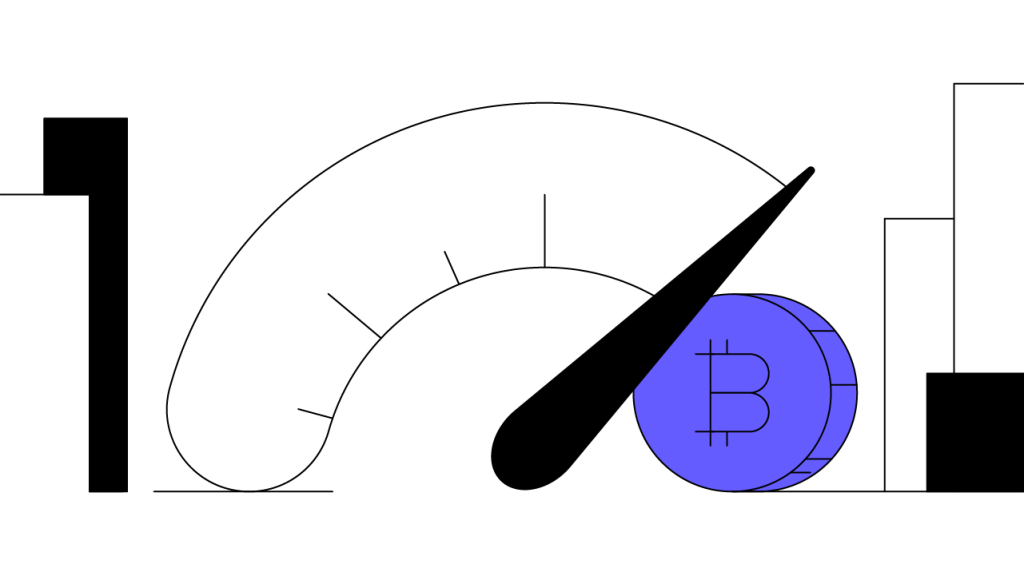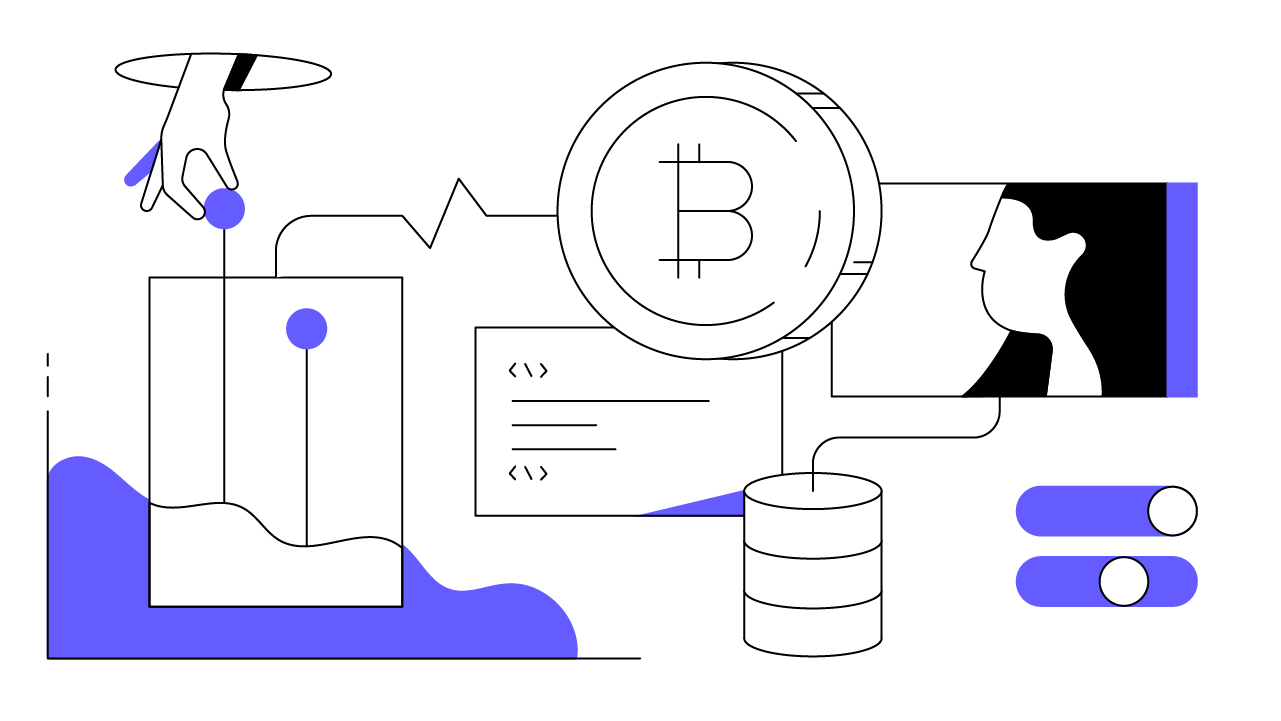Contents
Cryptocurrency and Energy Usage: Explained
Understanding consensus mechanisms like Proof of Work and Proof of Stake is essential to understanding interactions between energy usage and cryptocurrency.
Updated February 26, 2025 • 5 min read

Summary
Although Bitcoin has become a global name, blockchain consensus mechanisms and energy use aren’t as well understood. In the case of Bitcoin, network validators known as miners participate in a Proof-of-Work (PoW) consensus mechanism. In doing so, miners must compete to solve complex mathematical problems that require significant computational power. As nations worldwide strive towards environmental sustainability, cryptocurrency mining electricity consumption has faced increased scrutiny. Some PoW blockchain projects like Ethereum are adopting Proof-of-Stake (PoS) models in response to these concerns. Alternatively, many Bitcoin miners are switching to renewable energy sources in consideration of the environment.
Blockchain Technology and Consensus
Although the internet has become an integral part of everyday life around the globe, the underlying infrastructure has undergone little change since its inception many decades ago. In particular, many experts argue that the internet’s heavily centralized client-server architecture continues to prove problematic in regards to security, privacy, and equitability. In contrast to the internet’s centralized network structure, blockchain technology operates over a decentralized network of nodes, with each node holding a copy of the same information held on the network. In addition to addressing many of the underlying issues of the internet, the blockchain network framework supports the development of cryptocurrency networks like Bitcoin and the deployment of decentralized applications (dApps), NFTs, and DeFi. Despite finding solutions to these issues, blockchain networks face unique challenges of their own. One of the most significant of these challenges is energy consumption.
Unlock the future of money on Gemini
Start your crypto journey in minutes on the trusted crypto-native finance platform
Although each blockchain offers unique functionality, all blockchain network architecture requires what’s called a consensus mechanism to operationalize the transaction and confirmation of data throughout a decentralized infrastructure. Although consensus mechanisms take many forms, most are iterations of Proof of Work (PoW), Proof of Stake (PoS), or a combination of both. The main differentiator between these mechanisms is that while Proof of Work requires an energy-intensive system of networked computer hardware nodes around the world, Proof of Stake relies on a far less energy-intensive network of staked collateral to ensure the function of a network.
As cryptocurrency has become more mainstream, sustainability concerns have grown with regard to the PoW consensus mechanism that undergirds blockchain networks like Bitcoin and Ethereum 1.0. Before we can explore the relationship between Proof-of-Work blockchains and the environment, it's necessary to understand how PoW functions, how PoW consensus relates to cryptocurrency mining, and what energy usage PoW systems can require.
Bitcoin Mining Costs and Proof of Work (PoW)
Out of all the blockchain networks that utilize PoW, Bitcoin remains the most popular. Emerging in 2009, bitcoin (BTC) is the leading digital asset market in valuation and name recognition. The Bitcoin blockchain utilizes the PoW algorithm to confirm all transactions that occur on the network. The individual nodes of computer hardware that make up the blockchain network are called miners. Each node holds a copy of the same information and interacts with the network in real-time. Every time a transaction occurs, the resulting data becomes part of a “block” that miners must validate before it’s recorded to the blockchain. On average, it takes 10 minutes to validate a block of transactions on the Bitcoin network. During this time, miners compete with each other to solve a complicated mathematical puzzle.
The Bitcoin protocol adjusts the PoW algorithm difficulty up or down to ensure this process averages around 10 minutes. The difficulty is adjusted every 2016 blocks based on how long the previous 2016 blocks took to mine. When the Bitcoin network grows, the algorithm becomes increasingly difficult to solve because more miners compete. This dynamic requires a massive amount of computational or hash power, which also drives more powerful mining rigs. In general, there are two dominant mining rigs, also known as processing units, that PoW miners use:
Graphics Processing Unit (GPU): These mining rigs utilize the processing power of computer graphics cards to mine cryptocurrencies. Although graphics cards are found in every computer, mining rigs integrate high-performance gaming GPUs to maximize computing power.
Application-Specific Integrated Circuit (ASIC): These mining rigs are similar to random access memory (RAM) chips found in computers. However, rather than operating as a generic integrated circuit, ASIC miners are built to maintain a specific blockchain. Although ASIC miners are more expensive than GPU miners, they’re more powerful and optimized for mining Bitcoin in particular.
Regardless of the mining rig in use, the computational power required to conduct PoW mining has become a popular topic of discussion. Such concerns have led many to question Bitcoin mining’s environmental costs, while the second most valuable cryptocurrency, Ethereum, is currently transitioning to the less energy-intensive Proof-of-Stake model. If you're holding or planning to invest, keeping an eye on Ethereum's price during this transition can help you make more informed decisions.
Bitcoin and Cryptocurrency Mining: Electricity Usage
According to real-time estimates from the University of Cambridge, Bitcoin's annual energy consumption was 130TWh in March 2021, equating to a continuous 15-gigawatt draw of electricity. In terms of countries, Bitcoin's energy use at the time would be similar to Ukraine or Argentina. In contrast, the PoS Tezos network was using around 60MWh annually, or a continuous draw of 7 kilowatts over the same period. By drawing such comparisons, it's apparent why there are growing environmental concerns surrounding Bitcoin's mining costs and overall energy usage.
If the price of bitcoin continues to increase over time, more hashing power will be necessary as more miners compete for block rewards. However, this process will also help make the Bitcoin network more secure — higher hashing power generally equates to higher network security. Alternatively, if the price of bitcoin decreases over time, fewer miners will compete for block rewards, and the network would become less secure.
Independent of these market fluctuations, many see Bitcoin as a threat to sustainable energy use. For example, one study found that even a few Bitcoin transactions equate to driving a gas-powered sedan one thousand kilometers. Many PoW miners are switching to renewable energy crypto mining in response to these concerns. However, some argue that this will slow the transition to green energy in other sectors as Bitcoin mining consumes excess capacity.
Bitcoin Mining and PoW Innovations
Although Bitcoin mining is obscure to many, it simply represents the PoW consensus mechanism. This mechanism uses cryptographic hash algorithms to reach a consensus on decentralized networks. In the absence of central oversight, miners assume the responsibility of validating all network transactions. In exchange, they receive block rewards in the form of BTC. While this process has come under scrutiny for its energy consumption, several innovations are slated to reduce consumption.
For example, renewable energy crypto mining has become a focal point across the industry, especially when discussing excess supply. Although estimates as to the make-up of the energy utilized in bitcoin mining are difficult to accurately quantify, it has been reported that up to 73% of bitcoin’s energy consumption is carbon neutral. This has been driven by a reliance on hydro power in mining centers including Southwest China and Scandinavia.
Further, to conceptualize these ideas, we can think of cryptocurrency mining as the process of turning electricity into a financial asset in the form of block rewards. However, because non-renewable energy is less expensive than renewable energy, miners are incentivized to use the former to maximize profits. To alter this dynamic, excess renewable energy could be routed to cryptocurrency mining instead of being sold back to the grid or stored when those options are cost-ineffective. In other words, this model could provide a way to mine PoW cryptocurrencies with clean energy, cut emissions, and convert excess renewable supply into an asset with value. Although in its infancy, this concept may help Bitcoin overcome the ecological headwinds it faces as the world continues to adopt renewable energy and other sustainable technologies.
While Bitcoin is the most well-known cryptocurrency, it is also the oldest and relies on the most basic architecture available in the wider crypto space. Newer blockchain networks are increasingly relying on Proof-of-Stake-based consensus mechanisms that entirely eschew the process of hardware mining to achieve consensus driven by a system of staked collateral. Proof-of-Stake networks require upward of 95% less energy than PoW networks, and as PoS-reliant networks become more and more ubiquitous, it’s entirely possible that the debate surrounding cryptocurrency mining electricity usage will become an issue of the past.
Cryptopedia does not guarantee the reliability of the Site content and shall not be held liable for any errors, omissions, or inaccuracies. The opinions and views expressed in any Cryptopedia article are solely those of the author(s) and do not reflect the opinions of Gemini or its management. The information provided on the Site is for informational purposes only, and it does not constitute an endorsement of any of the products and services discussed or investment, financial, or trading advice. A qualified professional should be consulted prior to making financial decisions. Please visit our Cryptopedia Site Policy to learn more.

Is this article helpful?


